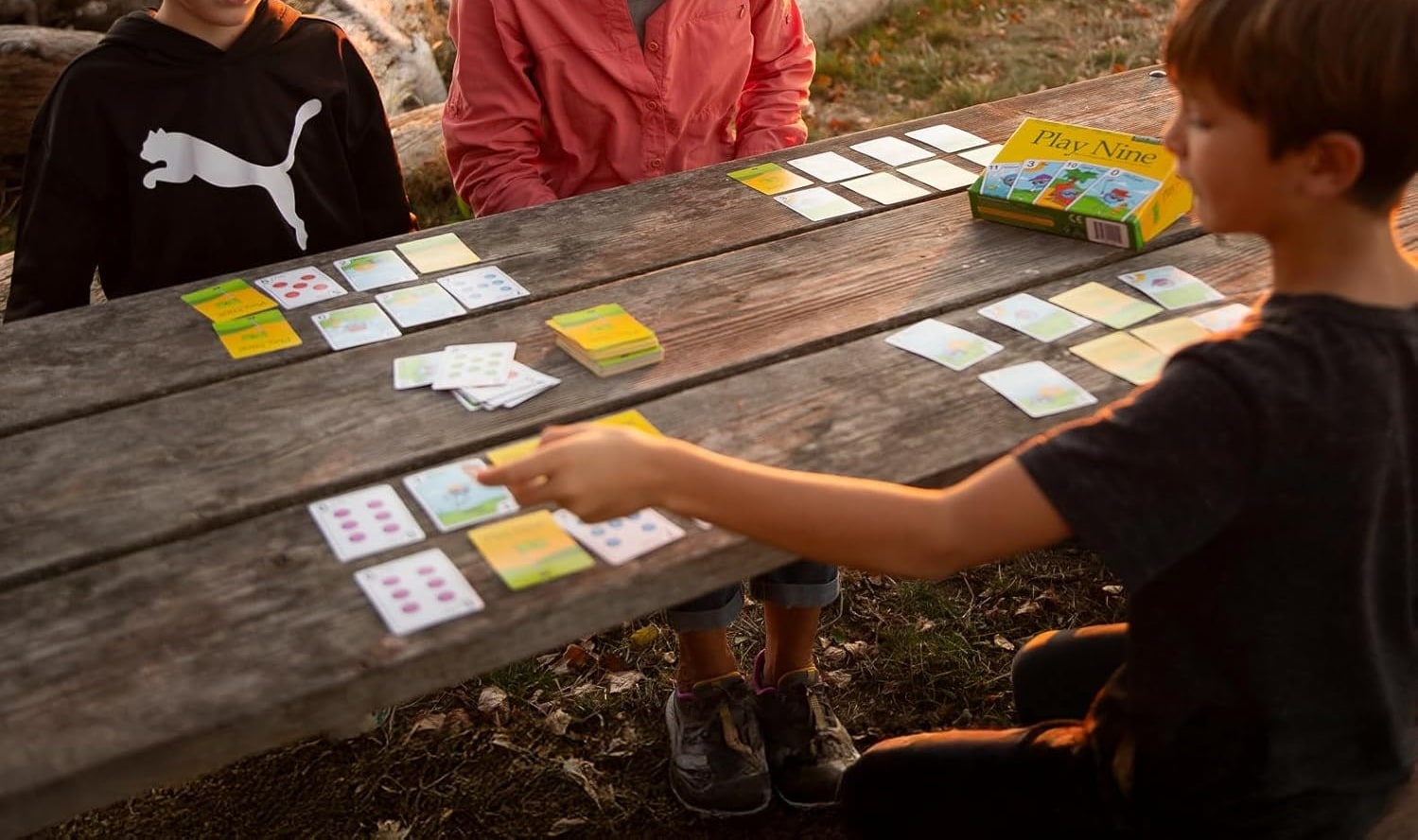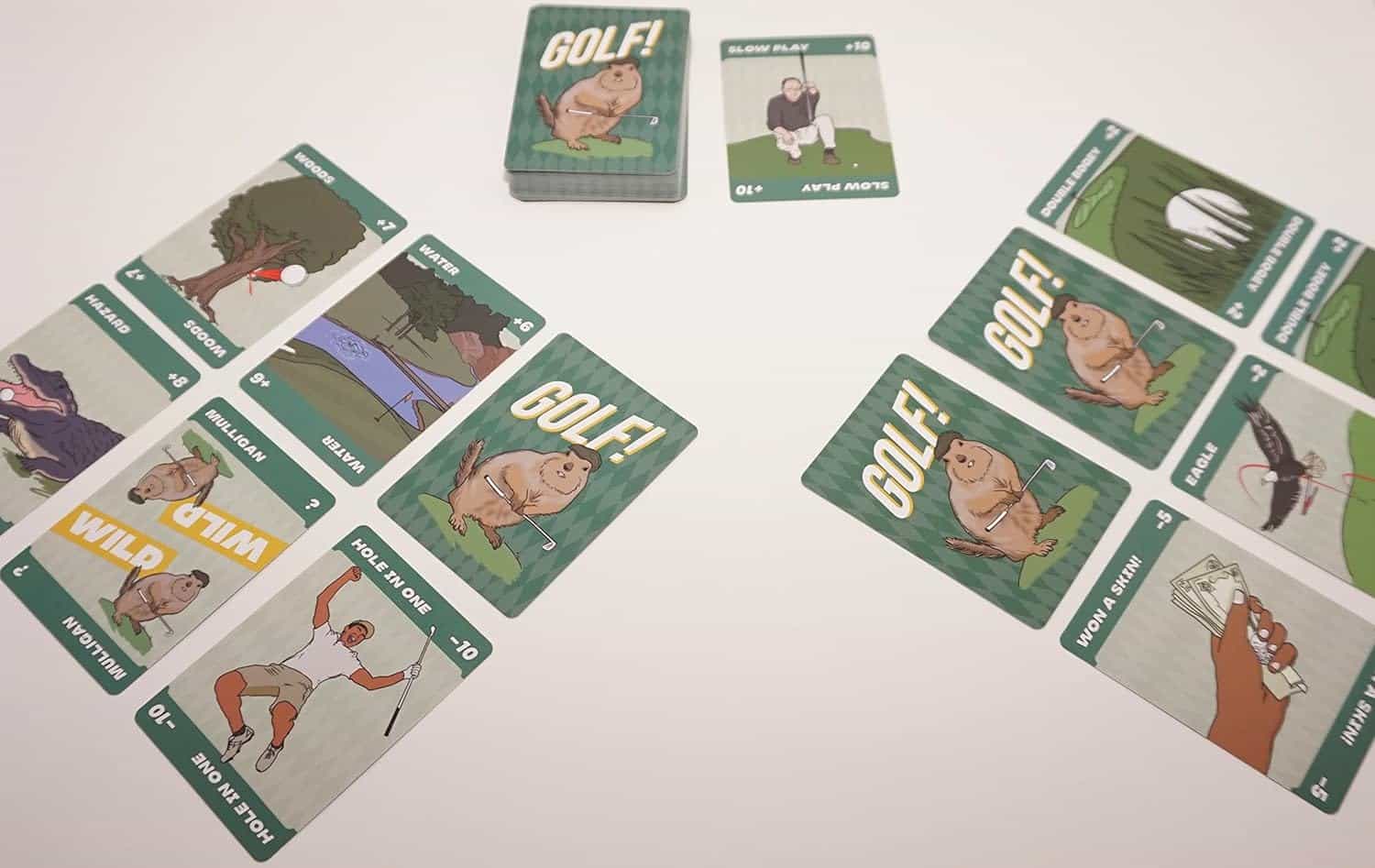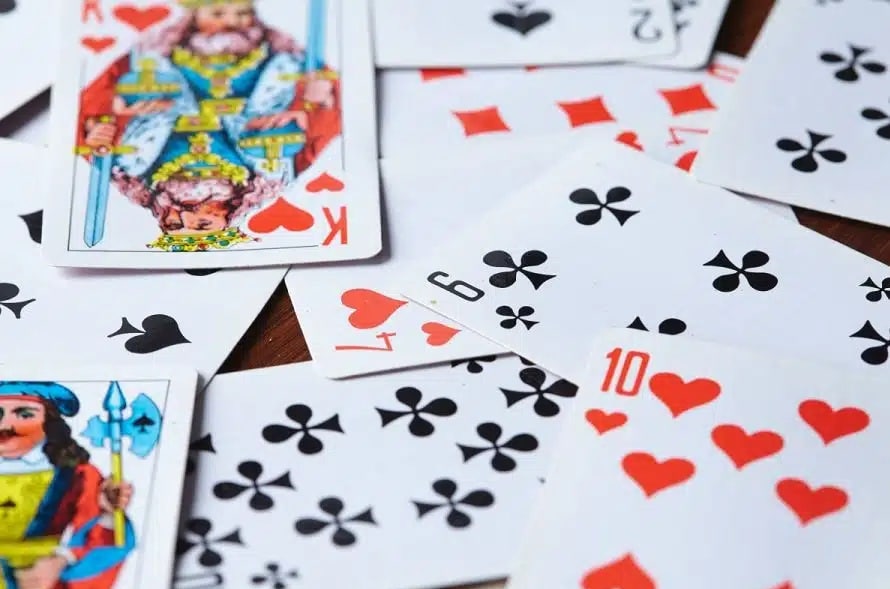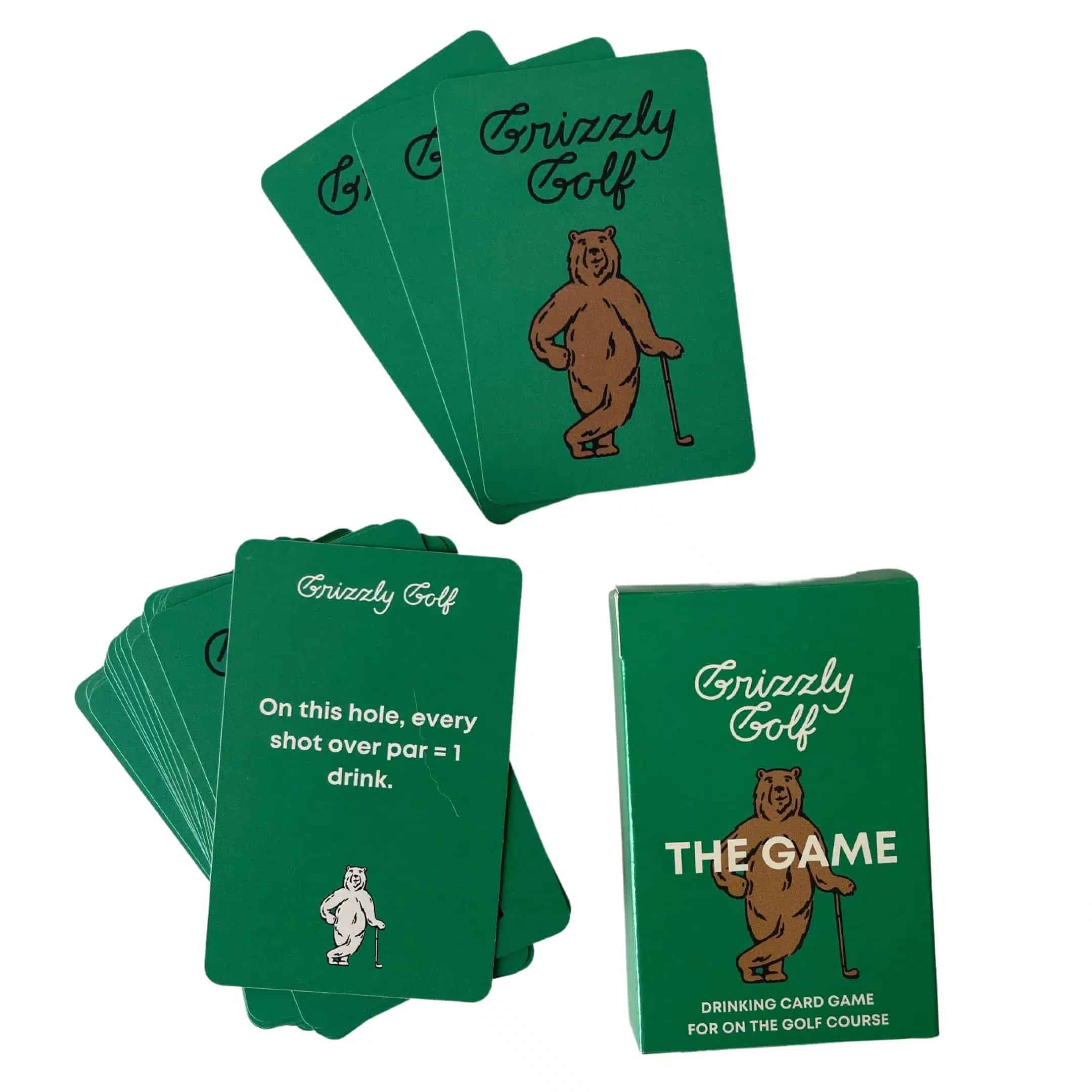You'll play Golf by arranging 4-6 cards face-down in a grid, aiming for the lowest total score across multiple rounds. Draw cards from the stock or discard pile, then replace cards in your layout to minimize points—Aces score 1, face cards score 10 (except Kings, which score 0), and matching cards in the same column cancel out completely. The round ends when someone flips all their cards face-up, giving others one final turn. Perfect these fundamentals and you'll uncover advanced strategies that separate casual players from true Golf champions.

Getting started with the Golf card game requires just three essential items that you probably already have at home. To begin, you'll need a standard 52-card deck—no jokers required! The beauty of this game is that 2 or more players can join in, making it perfect for small gatherings or larger groups.
You'll also want a playing surface large enough for everyone's card layouts. Think of your kitchen table or living room floor—anywhere players can spread out their cards without crowding each other. The important point is that each player needs space for either 4 cards arranged in a square or 6 cards in a 2x3 grid.
Finally, grab a score pad or use your phone to track points after each round. The game consists of either 9 or 18 deals, with the player having the lowest total score declared the winner. Each player receives four cards face down during the initial deal, which forms the foundation of their personal layout. At the start of each round, players can only view two cards from their initial hand, keeping the rest hidden until strategic exchanges are made. That's it—you're ready to play!
Now that you've got your cards ready and space cleared, understanding how points work will make or break your Golf game strategy. The key point is—you're trying to score as few points as possible, just like real golf!
Most cards score their face value: threes through tens equal their numbers, while Aces count as one point each. Jacks and Queens hit you with ten points, but Kings are your best friends at zero points. Twos typically cost you negative two points (that's good!), though some variations treat them differently.
This is where it gets interesting—matching cards in the same column cancel each other out completely! Two sevens stacked vertically? Zero points instead of fourteen. Four matching cards across columns can even give bonus negative points. If you're lucky enough to get three jokers in a column, they'll score negative fifteen points total. Just like in actual golf, where the handicap system enables fair play between players of different skill levels, the Golf card game's scoring balances luck and strategy to keep games competitive. The winner is determined after nine plays when the player with the lowest total score claims victory.
Once you've shuffled the deck and chosen your dealer, it's time to set up your Golf battlefield—and trust me, the way you arrange these cards can make the difference between victory and total disaster! The dealer distributes cards face down to each player, typically four or six cards depending on your chosen variation. You'll arrange these cards in a neat grid pattern: 2x2 for four-card games or 2x3 for six-card versions. Here's the vital part—don't peek at your cards yet! In six-card versions, you can flip two cards face up after arrangement. The remaining deck becomes the stockpile, and one card gets flipped face up beside it to start the discard pile. Remember that your face-down cards cannot be looked at during play, so those initial face-up card choices are crucial. Golf operates as a slow-paced tutor experience, allowing beginners to learn the fundamentals while developing their strategic thinking skills. Just like golf on the course, mastering the card game requires patience and practice to develop consistency and improve your strategic decision-making over time.

After you've arranged your Golf cards in their perfect little grid, the real action begins with a turn structure that's both simple to learn and surprisingly strategic to conquer. Play moves clockwise from the dealer's left, and each turn follows a straightforward pattern: draw one card, then make a decision.
You'll start by drawing from either the stockpile (mystery card!) or the discard pile (known quantity). Here's where strategy kicks in—you can swap that drawn card with any card in your layout, sending the replaced card to the discard pile face-up. Don't like what you drew? Simply discard it and end your turn. Remember, once you've made your move, there's no taking it back! Just like finding the right golf partner through online communities, building an effective card strategy requires patience and thoughtful decision-making.
Alternatively, a player can choose to knock when they believe they have the lowest score, signaling confidence in their hand position. The round continues until one player achieves the ultimate goal of having no face-down cards remaining in their layout. When this happens, each remaining player gets exactly one more turn to improve their position before all cards are revealed and scored.
When it's your turn to draw a card, you've got two distinct paths to choose from—and each one comes with its own set of rules and strategic implications.
You can grab the top card from the face-down stock pile or snatch the visible top card from the discard pile. Here's the catch: if you draw from the stock, you can immediately discard that card if it doesn't help your layout. However, if you take from the discard pile, you must use that card to replace one in your layout—no backing out!
The replacement process requires commitment without peeking. You'll place your drawn card face down exactly where the replaced card sat, then flip the old card face up onto the discard pile for others to potentially grab. Remember that Kings score zero points, making them valuable cards to secure in your layout whenever possible.
Just as traditional golf club names like the mashie and niblick eventually gave way to numbered systems for easier play, card games have similarly evolved to create clearer, more standardized rules that players worldwide can follow.
Additionally, you have a third option on your turn: you can knock to end the round, signaling that you believe your layout has the lowest possible score and forcing all players to reveal their cards for scoring.
While basic card values form the foundation of Golf scoring, the real strategy emerges through special combinations that can dramatically slash your point total. Here's where the excitement begins! When you match two identical cards in the same column, they score zero points instead of their face value. That's a pivotal moment when you're holding two 10s or Queens.
Even better, if you create two equal pairs in different columns, you'll earn a sweet -10 point bonus. Four matching cards across two columns can net you -10 or even -20 points, depending on your house rules. The peak achievement? Landing a 9-card straight scores you -12 points. These combinations alter Golf from simple addition to strategic card collecting!
Much like how golfers must consider shaft flex when selecting equipment to match their swing speed and playing style, card game Golf requires players to adapt their strategy based on the combinations available and their position in the game.

Building those strategic combinations is one thing, but knowing exactly how and when to end a round. That's where the real strategy kicks in! A round ends when you've got all six cards face up—this triggers the endgame phase. The key point is: once you reveal everything, each opponent gets one final turn to minimize their damage.
During these final turns, players can draw from either pile and swap out high-value cards. If they grab from the discard pile, they must play it immediately—no takebacks! This creates intense last-minute decisions. Some variations let you call "Cactus" to signal round end, but be careful—you'll face penalties if opponents score lower than you.
Just like in golf, where professional instruction helps improve your swing mechanics and strategic thinking, mastering the endgame phase requires practice and expert guidance to transform frustrating rounds into rewarding victories.
Three fundamental strategies separate Golf rookies from seasoned players, and overcoming them will dramatically improve your scores. Initially, prioritize low-value cards like Aces and 2s while ditching high cards early—those Queens and Kings can destroy your score! Second, track what opponents pick from the discard pile. If someone grabs a 7, they're likely building something specific, so don't feed their strategy. Third, excel at column matching to zero out scores. The key point: pairing two 4s in the same column cancels both cards completely. You'll also want to use Kings strategically since they're worth zero points without requiring matches. Remember, drawing blindly wastes opportunities—always assess your grid and the discard pile before making moves. Just like golfers benefit from video analysis to identify swing flaws, reviewing your past Golf card games can reveal patterns in your decision-making that cost you points.
Once you've perfected these winning strategies, you'll put them to the test across multiple rounds that mirror an actual golf course. Most games run either nine or eighteen rounds—just like golf holes! Each round ends when someone flips their final face-down card, triggering one last turn for everyone else.
Here's the thing: you're playing the long game. Your scores accumulate across all rounds, and the lowest total wins. That means a bad round won't sink you completely, but consistency matters more than occasional brilliance. If you score 15 points in round one and your opponent scores 8, you'll need to make up that 7-point difference over the remaining rounds.
Just like in actual golf, where players focus on accuracy over distance to achieve better scores, maintaining steady performance throughout the card game will serve you better than trying for risky moves that might backfire.
After all rounds finish, simply add up your totals—the lowest score takes the victory!

No, you can't secretly peek at your own cards during Golf! You're only allowed to look at exactly two cards at the very start of the game by flipping them face up. After that, you can only see a card by officially flipping it during your turn, making it visible to everyone. Any sneaky peeking without flipping breaks the rules and ruins the strategy.
When the stockpile runs out, you'll reshuffle the discard pile to create a new stockpile. The point is—you can't leave the top discard card when reshuffling, so it stays face-up for players to draw from. This reshuffling keeps the game flowing smoothly! Some variations don't mention this rule explicitly, but it's crucial to prevent the game from grinding to a halt mid-round.
You'll find the Golf card game works great for stages 6 and up! Most versions recommend this minimum stage since kids need basic memory skills to remember face-down cards and simple math for scoring. The "Play Nine" edition specifically targets stages 8+ for ideal strategic thinking. The key point—younger children can still play with some rule simplifications and adult help, making it truly family-friendly across generations.
You can absolutely play Golf with different deck variations and custom cards! You might use multiple decks for larger groups, add jokers worth -2 points, or create special cards like Red Kings (-1 point) and Black Kings (12 points). Some players introduce power cards that let you peek at opponents' hands or force card swaps. These variations add exciting strategic layers to the basic game!
Keep the accidentally revealed card face-up and continue your turn normally—don't try rearranging anything! You'll score it openly at the game's end, which removes the mystery, but that's how it goes. Your opponents now have extra info about your hand, so they might adjust their strategy. The point is: most groups stick with "what's revealed stays revealed" to keep things fair and moving smoothly.
You've got everything you need to excel at Golf! Start with the basic 4-card version to learn the ropes, then try 6-card or 9-card variations once you're comfortable. Remember, keeping your score low is key—those face cards will hurt you. Don't be afraid to peek at your cards early, and watch what others are discarding. With practice, you'll develop instincts for when to play it safe versus taking risks!